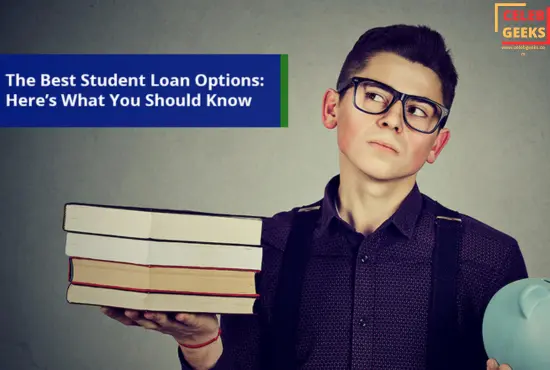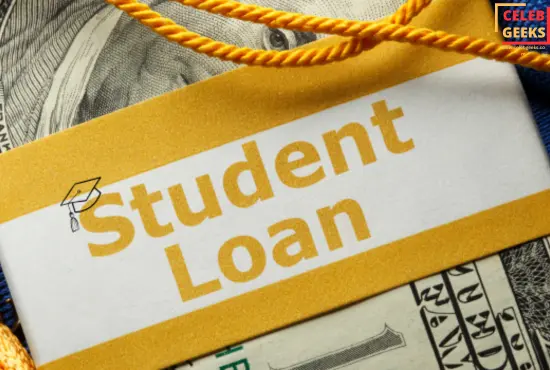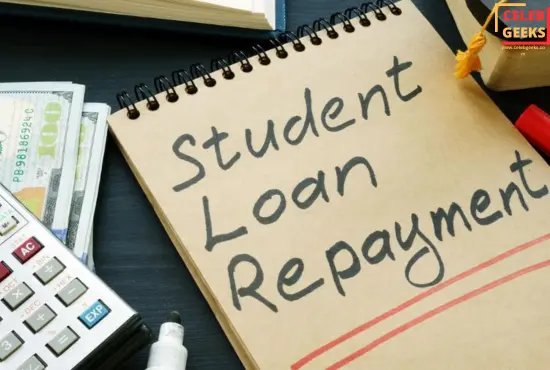The best student loans help in going to college for higher learning, achieving career goals, and personal growth. Many students end their college because they can’t pay their fees. However, students borrow to pay their fees. Choosing the best student loan in 2024 will help you manage your finances in college and after graduation. In this article, you can explore the best student loans based on current interest rates, repayment options, and qualifications.
Understanding Student Loans: Federal vs. Private Loans

Firstly, it’s essential to understand between two types of loans federal and private before going to the student loans.
Federal Student Loans
Federal loans are administrated by the U.S. Department of Education. In terms of conditions, federal loans have a lower rate than private loans. The advantages of these loans are fixed interest rates, flexible repayment options, and even borrower protections through the forms of income-driven repayment plans and loan forgiveness programs.
Private Student Loans
Private loans are provided via banks, credit unions, and other different financial companies. Generally, they demand a co-signer and include a credit check. Sometimes, they also provide offers of lower interest to more favorable credit consumers. Also, the conditions of repayment and consumer protections of federal loans are not in private loans.
Additionally, federal student loans have the best low interest rates and provide fixed interest rates considered best for many borrowers. It also doesn’t require your credit card or other consumer protection. However, the amount of federal loans is limited, that is why some student consider a private loan to pay their college fee.
Best Federal Student Loans for 2024

Federal loans are the most popular choice for students because of its attractive terms and safety conditions. Some of the best federal student loans in 2024 are as follows:
Direct Subsidized Loans
These loans are provided to undergraduate students to fulfill their academic needs. While a study in college, their grace periods, and deferment periods the government will be paying interest. Therefore, there are more reasonable lending options available.
Direct Unsubsidized Loans
Both undergraduate and graduate students can take these loans whatever their financial situations. However, the interest rate is your responsibility as soon as the loan is granted. If the loan is not paid back then the interest is capitalized, which means that it will raise the total loan cost while the student is enrolled in the college.
Direct PLUS Loans
PLUS loans are provided to graduate/professional students and for dependent undergraduate parents. These loans have higher interest rates and expensive fees than other federal loans, but the total cost of college is covered through this loan. Although, a check of credit is required poor credit candidates can also apply for this if they provide a referral or proof of special circumstances.
Perkins Loans (Phased Out)
As of 2017, the Perkins loans program has been ended, but it’s mentioned important who still carries this. This loan is for students to meet their exceptional financial needs and allows low and fixed interest rates with great payback advantages. These repayment conditions are still available for current borrowers.
Best Private Student Loans for 2024

While federal student loans should be your first choice, private student loans can be useful if you’ve surpassed federal loan limits or have specific financial needs. Here are some of the best private student loans in 2024:
Sallie Mae Smart Option Student Loan
Sallie Mae provides one of the most supportive private loans. Students have three options to repay their loans deferred, fixed payments, and interest-only payments. No startup or penalty fees are required and interest rates are profitable, especially for borrowers with good credit or a co-signer.
College Ave Student Loans
College Ave is renowned for providing adjustable loan terms. It helps borrowers choose their repayment method according to their financial situation. While attending the school, you can select to make full, interest-only, or deferred payments, and loan terms range from 5 to 15 years. Borrowers who take loans for a long period, this opportunity is great for them.
SoFi Private Student Loan
This type of loan is a great option for students who plan to modify loans once they are out of college. SoFi provides competitive rates and other advantages such as career coaching and employment protections. Also, payments are temporarily stopped when you lose your job.
Discover Student Loans
Discover student loans are easy and simple to apply with no fees at all. For good grades, you receive a cash reward, and you can also choose to pay in school or postpone. If you submit your automatic payments, they offer reductions of an additional 0.25% of interest. They provide outstanding customer service that is very helpful in managing your loan.
Earnest Student Loans
Earnest is one of the most borrower-friendly private student loans with no fees and flexible repayment options. It allows borrowers to skip the payment once a year, which will be added to the end of the loan. If you suffer financial hardships the lender offers suspension options. It’s a good option for borrowers looking for customizable terms.
Interest Rates and Fees: What to Watch For

You need to consider a couple of things when selecting student loans such as interest rates and fees. For federal loans, the interest rates are fixed in 2024, meaning they will not change with time. For loans granted after July 1, 2023, the following are the interest rates:
Direct PLUS Loans: 8.05%
Unsubsidized Loans (Graduate or Professional Students): 7.05%
Direct Subsidized and Unsubsidized Loans (Undergraduates): 5.50%
However, the interest rate of a Private loan can be fixed or variable. Depending on the market, the Variable rate can grow over time after starting low rate. Although, it might come at an initially higher price their fixed rates have more stability. Private loans also carry upfront or initial fees, and late charges, among other provisions; thus, it’s important to read the fine print.
Repayment Options: Federal vs. Private
The main difference between the federal and private loans is flexibility. Federal loans come with many kinds of repayment methods to assist borrowers in managing their debt such as
- Standard Repayment Plan: Payments are fixed over 10 years.
- Graduated Repayment Plan: Payments begin at a low and escalate by two years, usually within ten years.
- Extended Repayment Plan: Payments can be either fixed or graduated, with the service period spread for 25 years.
- Income-Driven Repayment Plans: These plans (like Income-Based Repayment and Pay As You Earn) give a percentage of the number you have to pay each month based on your discretionary income. The remainder balance may be forgiven after 20 or 25 years.
Generally, Private loans provide some choices in terms of repayment. While you are in college, some private banks provide deferment and interest-only payments. After graduation, you haven’t such flexibility. However, some private lenders, such as SoFi and Earnest, offer forbearance options or even let you change your repayment options under certain circumstances.
Tips for Comparing Low-interest Student Loans
Do your research when you take a low-interest student loan. Experts advise borrowing only what you will probably earn in your first year after college. This might help you from having unmanageable monthly payments after you leave college. When reviewing each lender and loan, consider the following factors:
Loan amount
The loan funds are different for different lenders, and also they vary according to the degree being pursued. Also, some lenders finance up to 100 percent of school costs, but using college savings, grants, and scholarships can minimize your total borrowing costs.
Loan cost
The main factor that determines the cost of student loans is the annual percentage rate or APR in short for a loan and will depend on your credit. Most private lenders of a student loan charge no application or origination fees, and it’s always worth checking extra fees to get the total cost of the loan.
Repayment term
A loan term usually goes from five to 20 years. A shorter loan term has a higher payment and gets you out of debt sooner, but with a longer loan term, you pay more over a long period in interest, although your monthly payments will be smaller.
Borrower benefits
Lenders will have different perks that they offer borrowers, including the use of autopay for an interest rate discount. In some instances, lenders even offer payments that are deferred until after you leave school; in other instances, if you are suffering from hardship or financial situations, payments are temporarily postponed.
Co-signer release
One of the best ways to qualify for a low-rate student loan is by applying with a co-signer who has good credit. Some lenders also have a policy of co-signer release, where you can remove the co-signer from the loan if you make a definite number of on-time payments.
Frequently Asked Questions
What’s the difference between federal and private student loans?
The federal loans will have fixed interest rates and flexibility for repayment while providing the same protections, such as loan forgiveness. Private loans through a bank or credit union may involve credit checks but do not provide these types of protection and often have rates that fluctuate.
Which federal student loan is the best?
Your best bet at first is Direct Subsidized Loans. They’re best used for need-based undergraduate students, for whom the government pays interest while you are enrolled in school. In contrast, Direct Unsubsidized Loans are good even for more students, though you accrue interest.
When should I consider private student loans?
Except for private student loans, once you have exhausted your federal loan, they are a good option even if you have great credit or a co-signer to get you a low interest rate.
What are the interest rates for federal student loans in 2024?
RateThe rates for undergraduates are 5.50%, graduate/professional students stand at 7.05%, and PLUS loans stand at 8.05%. These rates are fixed over the life of the loan.
Are there loan forgiveness programs?
Yes, federal loans have PSLF or Public Service Loan Forgiveness and TLF or Teacher Loan Forgiveness. The former hardly ever occurs with private loans.
Related search:
Quick Guide, Which are the best college loans?
